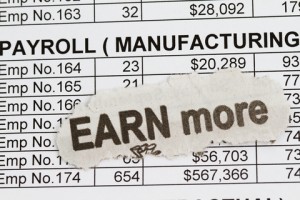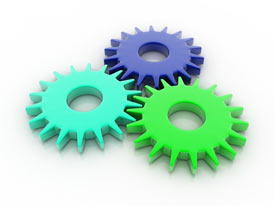 Home-based business owners can take advantage of a tax deduction that allows them to deduct a portion of their rent and utilities bills from their income taxes, understanding the requirements for the deduction is key to being able to legally use this money-saver.
Home-based business owners can take advantage of a tax deduction that allows them to deduct a portion of their rent and utilities bills from their income taxes, understanding the requirements for the deduction is key to being able to legally use this money-saver.
If your business is located in your home, you may be able to deduct some of your home expenses – costs such as rent or depreciation, utilities, insurance premiums, property taxes – from your federal taxes. In general, the IRS allows qualifying home businesses to deduct a pro rata – that is a share proportional to the area used for business – of these expenses from your federal taxes.
Basic requirements
The IRS has a pretty broad definition of home, defining it as just about any type of dwelling where you can sleep and prepare meals, so this can include houseboats, apartments, mobile homes, campers, etc. Simply put, if you live there, it’s your home.
Aside from the definition of “home,” IRS rules about the home business deduction are pretty tight. When deducting expenses for a home business, you must regularly use part of your home exclusively for business and be able to prove that you use your home as your principal place of business, regularly meet customers there or use a separate structure on your property for business purposes.
You are only allowed to deduct home business expenses if you have space in your home that is completely dedicated to business use. For example, if you have a spare room that you use exclusively for an office, chances are very good that you can claim that room for the home business deduction. If you occasionally use your kitchen table to set your business laptop on while your work, chances are you can’t claim the kitchen for the home business expense.
There are exceptions to the exclusive use rule. If your business use for a portion of your home is for storing inventory or product samples, or if you’re running a qualified day care center, the exclusive use rule does not apply.
You may not always be able to claim storage area as a home business deduction under the exemption, however. If you have an off site office or place of business, you may not claim storage area under the home business deduction. Also, to take the deduction, your items must be stored in a specific part of your home.
Once you meet the exclusive use threshold, you still must meet the principal place of business requirement. To successfully claim the home business deduction, your home must be your principal place of business, meaning that nearly all of your business activities are conducted there. You are allowed to meet clients or customers outside your home and still claim the deduction.
Calculating your home business expenses
Once you’ve established that your qualify for the home business exemption, you’ll need to calculate the costs that you can deduct from your taxes. You won’t be able to deduct all the expenses of your home, just those related to the operation of your business.
First, you’ll need to calculate the percentage of your home used for business, using either the square footage method or number of rooms method. The square footage method requires you to divide the square footage of the area of your home used for business by the area of the entire house. For example, if you live in a 1,000 sq. ft. home and use 100 sq. ft. for business, you’d divide 100 by 1000 and get .1, meaning that you use 10 percent of your home for business.
Under the number of rooms method, if your home has five similarly sized rooms and you use one for business, you would divide 1 by 5 to get .20, meaning that you use 20 percent of your home for business.
Once you have your area percentage, you may use it to determine what portion of your home expenses are deductible from your federal taxes. Home expenses fall into three categories: unrelated expenses, direct expenses and indirect expenses.
Unrelated expenses are home expenses unrelated to your business and cannot be deducted. For example, you cannot deduct the cost of a new bed or repainting your children’s room.
Direct expenses can be deducted entirely. Direct expenses may include things such as the cost of installing new carpeting or ceiling fans in the business area.
Indirect expenses are expenses that affect the entire residence, a portion of which you may deduct. Indirect expenses include rent, utilities, insurance, etc. This is where the business percentage calculation comes in handy. If your rent is $500 per month, and you’re using 20 percent of your home space for your business, you may deduct $100 per month ($1,200 per year) from your taxable income. You may also apply this calculation to other expenses, such as insurance, property taxes and utilities.
In case the IRS has questions about your use of a home business exemption, you should keep records to document the use of your home as a place of business. You should take pictures of the area used as an office, have a diagram of your home’s floor plan showing the designated business area, have a log of the times you are in the business area of your home, and have your business mail sent to your home address.
Even if you don’t qualify for the home business exemption, there are other costs you can deduct from your federal income taxes, such as your business-related phone costs, office supplies, furniture for your home office, etc.









